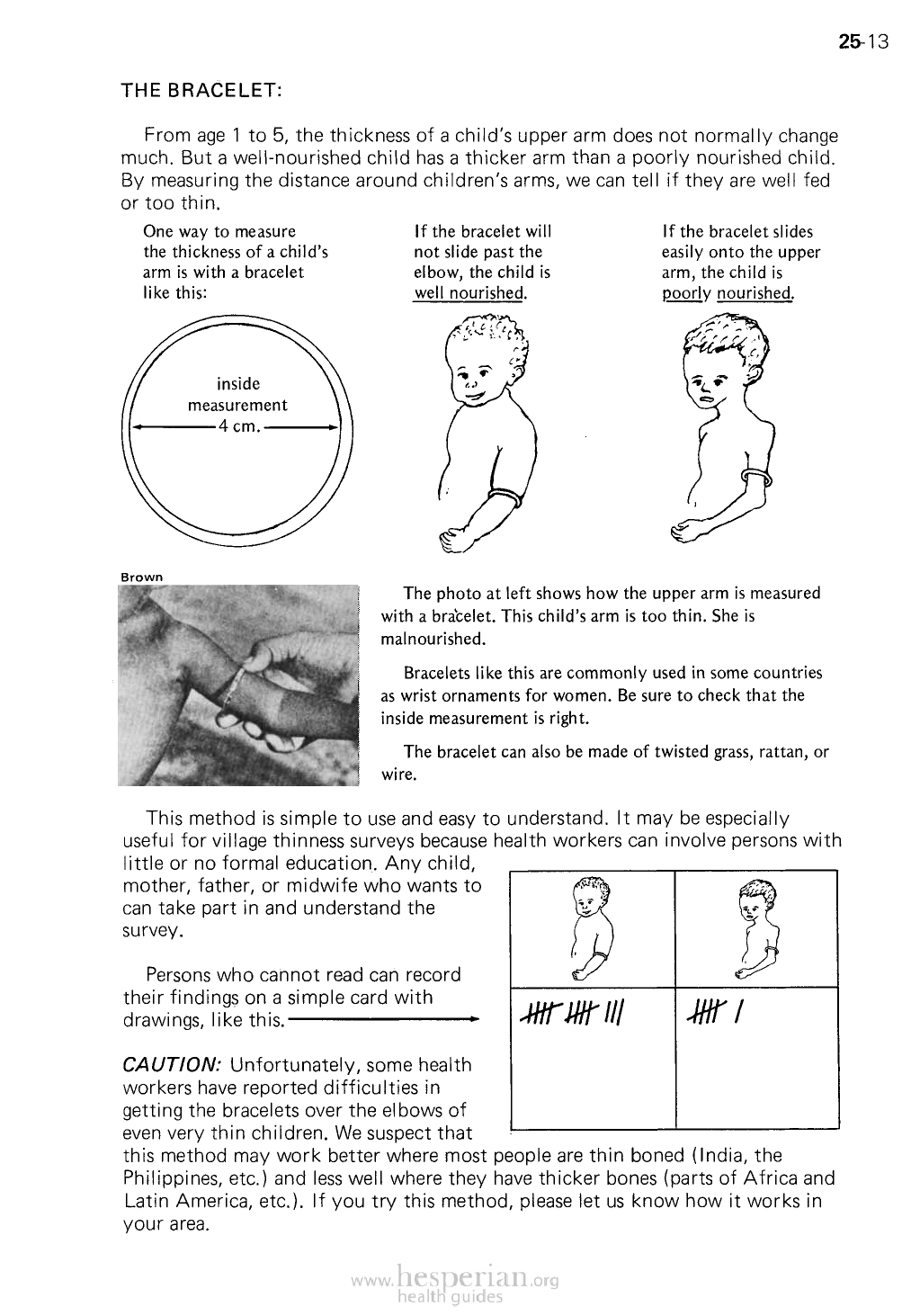
25-13
THE BRACELET:
From age 1 to 5, the thickness of a child’s upper arm does not normally change
much. But a well-nourished child has a thicker arm than a poorly nourished child. By
measuring the distance around children’s arms, we can tell if they are well fed or
too thin.
One way to measure
the thickness of a child’s
arm is with a bracelet
like this:
If the bracelet will
not slide past the
elbow, the child is
well nourished.
If the bracelet slides
easily onto the upper
arm, the child is
poorly nourished.
inside
measurement
4 cm.
Brown
The photo at left shows how the upper arm is measured
with a bracelet. This child’s arm is too thin. She is
malnourished.
Bracelets like this are commonly used in some countries
as wrist ornaments for women. Be sure to check that the
inside measurement is right.
The bracelet can also be made of twisted grass, rattan, or
wire.
This method is simple to use and easy to understand. It may be especially useful
for village thinness surveys because health workers can involve persons with
little or no formal education. Any child,
mother, father, or midwife who wants
to can take part in and understand the
survey.
Persons who cannot read can record
their findings on a simple card with
drawings, like this.
CAUTION: Unfortunately, some health
workers have reported difficulties in
getting the bracelets over the elbows
of even very thin children. We suspect
that this method may work better where most people are thin boned (India, the
Philippines, etc.) and less well where they have thicker bones (parts of Africa and
Latin America, etc.). If you try this method, please let us know how it works in your
area.